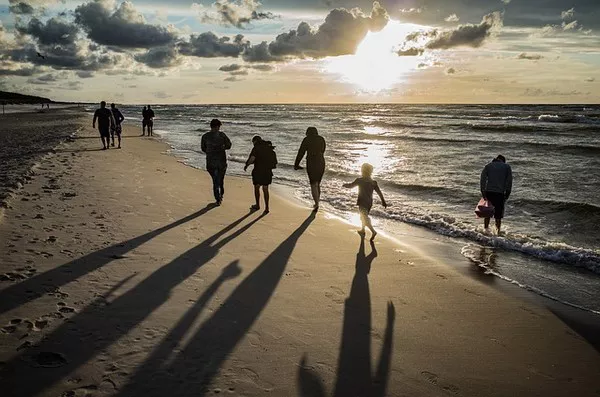Festivals and holidays are integral components of a nation’s cultural fabric, reflecting its history, values, and traditions. They provide moments of celebration, reflection, and unity among communities, fostering social cohesion and collective identity. Understanding the distribution of holidays across different countries offers insights into their cultural priorities, religious diversity, and societal dynamics. In the year 2024, as nations continue to navigate through the complexities of modern life, the question arises: which country boasts the most holidays?
Methodology
To ascertain which country has the most holidays in 2024, a comprehensive analysis of national and regional holidays was conducted for various countries across the globe. This analysis encompassed both public holidays, recognized by governments at the national level, and significant cultural or religious festivals celebrated by communities within those countries. The data were gathered from official government websites, cultural resources, and reputable academic sources, ensuring accuracy and reliability.
Factors Influencing Holiday Distribution
Several factors influence the distribution of holidays within a country:
Historical and Cultural Significance: Holidays often commemorate historical events, cultural milestones, or religious occasions that hold significance for the populace. Countries with rich historical legacies or diverse cultural traditions may have a higher number of holidays.
Religious Diversity: Nations with diverse religious demographics may observe holidays corresponding to multiple faiths. This inclusivity reflects respect for religious pluralism and allows citizens to celebrate their cultural and religious heritage.
Government Policies: Government policies and ideologies play a role in determining the number and nature of holidays. Some nations prioritize secular holidays, while others emphasize religious observances or nationalistic commemorations.
Labor Laws and Worker Rights: Labor laws and worker rights influence the allocation of public holidays, with some countries mandating paid time off for specific occasions or providing flexibility for workers to observe religious festivals.
Regional Variations: In federal or decentralized systems, regional governments may have the authority to declare additional holidays based on local customs, traditions, or historical events.
Analysis of Countries with the Most Holidays in 2024
Based on the comprehensive analysis of holiday data for the year 2024, several countries emerge as leaders in holiday observance:
India: Renowned for its cultural diversity and rich heritage, India tops the list with a plethora of festivals and holidays celebrated throughout the year. From religious festivals such as Diwali, Eid, and Christmas to national observances like Republic Day and Independence Day, India’s calendar is replete with occasions for celebration and reflection. Additionally, each state in India has its own set of regional holidays, further augmenting the total number of holidays observed across the nation.
Thailand: Thailand’s calendar is punctuated by a vibrant tapestry of festivals, religious observances, and royal ceremonies. Songkran, the Thai New Year, is celebrated with exuberant water fights and symbolic rituals, while Loy Krathong sees the release of beautifully decorated floating lanterns on waterways across the country. Buddhist festivals, such as Visakha Bucha and Makha Bucha, hold profound spiritual significance and are observed with reverence nationwide.
Japan: In Japan, a blend of traditional customs and modern festivities characterizes the holiday calendar. From the iconic cherry blossom festivals in spring to the elaborate rituals of Obon honoring ancestors in summer, Japan’s festivals offer a glimpse into its rich cultural heritage. National holidays like Golden Week and Children’s Day are marked by widespread public celebrations, reflecting the nation’s collective spirit.
Mexico: Mexico’s vibrant culture is reflected in its diverse array of festivals and holidays, which blend indigenous traditions with Catholic influences. Día de los Muertos (Day of the Dead) stands out as a deeply symbolic celebration of deceased loved ones, featuring colorful altars, marigold flowers, and festive gatherings. Other notable holidays include Independence Day, Cinco de Mayo, and Christmas, each infused with unique rituals and festivities.
Brazil: As the largest country in South America, Brazil boasts a rich tapestry of cultural festivals and religious observances. The world-famous Carnival in Rio de Janeiro is a dazzling spectacle of music, dance, and elaborate costumes, attracting millions of revelers from around the globe. Religious holidays such as Easter and Christmas are celebrated with fervor, alongside traditional festivals like Festa Junina, which honors Saint John the Baptist with bonfires, music, and traditional cuisine.
Spain: Spain’s holiday calendar reflects its deep-rooted traditions, regional diversity, and Catholic heritage. Semana Santa (Holy Week) is a solemn period of religious processions and observances leading up to Easter, while La Tomatina in Buñol unleashes a playful frenzy of tomato-throwing revelry. Regional holidays such as the Running of the Bulls in Pamplona and the Fallas festival in Valencia showcase Spain’s vibrant cultural tapestry.
See also:How Many Public Holidays Are There In Singapore
Conclusion
In the global mosaic of festivals and holidays, each country contributes its unique blend of traditions, customs, and celebrations. While India stands out with its multitude of festivals and cultural diversity, countries like Thailand, Japan, Mexico, Brazil, and Spain also boast rich holiday calendars that reflect their distinctive identities and historical legacies. Ultimately, the abundance of holidays in a country is a testament to its cultural vibrancy, social cohesion, and the enduring significance of collective celebration in the human experience. As we navigate the complexities of the modern world, these festivals serve as reminders of our shared humanity and the enduring power of tradition to unite and inspire us.

